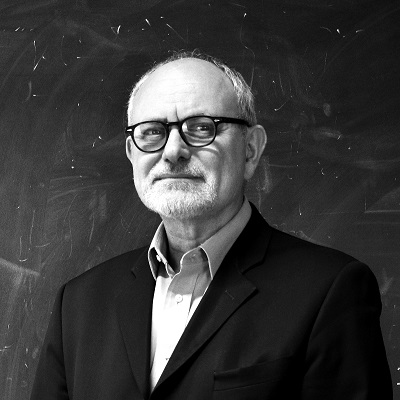Theoretical Public Economics
Teacher
GARY-BOBO Robert
Department: Economics
ECTS:
4
Course Hours:
24
Tutorials Hours:
0
Language:
English
Examination Modality:
written exam
Objective
The goal of the course is to study a number of important results of modern Public Economic Theory and some applications. We focus on externalities, public goods and various domains of public intervention: education, housing, roads, crime and justice, etc. The course is not covering the theory and practice of taxation (for this is done in another specific course on taxation). The course provides only basic notions of Social Choice and Voting Theory (at the beginning) and there is no attempt at treating Political Economy in general (again, these questions are studied in other courses). There are some prerequisites for this course. Familiarity with Microeconomic Theory as presented in intermediate texts (e.g., Hal Varian, Martin Osborne and Ariel Rubinstein), basic calculus and nonlinear optimization will of course be helpful. In addition to this, we do not restate or repeat the presentation of a number of classical results of Microeconomic Theory (as taught in Microeconomics M1 Courses at ENSAE or Ecole Polytechnique): Pareto optimality; competitive equilibrium and the fundamental theorems of Welfare Economics; basic notions on public goods and externalities, basic notions of Game Theory and Mechanism Design.
Planning
1- Some Classic Results on Social Choice and Collective Decision-making.
Local justice. Fair division rules — Equal sacrifice — Aggregation of preferences. Arrow’s theorem with utility functions— Foundations of Utilitarianism — Rawlsian Egalitarianism— The majority rule. The median voter theorem.
2- Public Goods (Theory)
Introduction to Implementation Theory — Strategic manipulation problems — Revelation of preferences for public goods — Clarke-Groves mechanisms — Bayesian mechanisms — Inefficiencies due to asymmetric information.
3- Externalities (Theory)
Difficulties of Pigovian and Coasian internalization — Mechanism Design approach — Sequential mechanisms under complete information (Varian’s two-stage mechanism) — Inefficiencies due to incomplete information: application of Myerson’s optimal auction theory.
4- Local Public Goods and Clubs
Equilibria with free mobility à la Tiebout — Theory of clubs — General equilibrium with clubs.
5- The Proper Scope of Government
Can we privatize (almost) everything? — Some Principal-Agent Theory — The Incomplete Contracts approach to Privatization (Oliver Hart’s approach) — illustration: the private prisons debate.
6- Applications 1. Congestion and Road Pricing
Urban congestion as an externality — Basic road pricing theory — The Bottleneck Congestion Model (Arnott, de Palma and Lindsay’s model)
7- Applications 2. Economics of Crime
Becker’s Economics of Crime revisited — Individual rationality, economic equilibrium and crime — Relational contracts approach to illegal modes of governance (Dixit’s model of the mafioso).
8- Applications 3. Economics of Education
Returns to education — Becker versus Spence: Signaling and Human Capital theories — Reasons for public intervention: externalities and credit market imperfections — Education and distributive justice (optimal provision of education under asymmetric information).
References
- Some useful books
Avinash Dixit (2004), Lawlessness and Economics: Alternative Modes of Governance, Princeton University Press.
Jean-Jacques Laffont (1988), Fundamentals of Public Economics, MIT Press, Cambridge, Massachusetts.
Andreu MasColell, Michael Whinston and Jerry Green (1995), Microeconomic Theory, Oxford University Press.
Hervé Moulin (2003), Fair Division and Collective Welfare, MIT Press, Cambridge, Massachusetts.
Hervé Moulin, (1989), Axioms of Cooperative Decision-Making, Cambridge University Press, Cambridge, Massachusetts.
Martin J. Osborne and Ariel Rubinstein (2020), Models in Microeconomic Theory, Open Book Publishers.
John E. Roemer (1996), Theories of Distributive Justice, Harvard University Press.
Bernard Salanié (2000), The Microeconomics of Market Failures, MIT Press, Cambridge, Massachusetts.
- Some journal articles
Richard Arnott, André de Palma and Robin Lindsey (1993), “A Structural Model of Peak-Period Congestion: A Traffic Bottleneck with Elastic Demand”, American Economic Review, 83, 161-179.
Mark Bagnoli and Barton Lipman (1989), “Provision of Public Goods: Fully Implementing the Core through Private Contributions,” Review of Economic Studies, 56, 583-601.
Aaron Chalfin and Justin McCrary (2017), “Criminal Deterrence: A Review of the Literature”, Journal of Economic Literature, 55(1), 5-48.
Bryan Ellickson, Birgit Grodal, Suzanne Scotchmer and William Zame (1999), “Clubs and the Market,”Econometrica, 67, 1185-1217.
Oliver D. Hart, Andrei Shleifer and Robert W. Vishny (1997), “The Proper Scope of Government: Theory and Application to Prisons,” Quarterly Journal of Economics, 112, 1127-1161.
Fabian Lange and Robert Topel (2006), “The Social Value of Education and Human Capital,” chap. 8 in: Eric Hanushek and Finnis Welch eds., Handbook of Economics of Education, volume 1, Elsevier, Amsterdam.
Sang Yoon Lee, and Ananth Seshadri (2016), “On the Intergenerational Transmission of Economic Status”, University of Wisconsin-Madison, mimeo, forthcoming, Journal of Political Economy.
George J. Mailath and Andrew Postlewaite (1990), “Asymmetric Information Bargaining Problems with Many Agents,” Review of Economic Studies, 57, 351-367.
Rafael Rob (1989), “Pollution Claim Settlements under Private Information,” Journal of Economic Theory, 47, 307-333.
Suzanne Scotchmer (2002), “Local Public Goods and Clubs,” chap. 29 in: Auerbach and Feldstein, eds,Handbook of Public Economics, vol. 4, Elsevier, Amsterdam.
Yves Sprumont (1991), “The Division Problem with Single-Peaked Preferences: A Characterization of the Uniform Allocation Rule”, Econometrica, 59, 509-519.
Hal R. Varian (1994), “A Solution to the Problem of Externalities when Agents are Well-Informed,”American Economic Review, 84, 1278-1293.
Gabrielle Fack and Julien Grenet (2010), “When do Better Schools Raise Housing Prices? Evidence from Paris Public and Private Schools,” Journal of Public Economics, 94, 59-77.
Denis Fougère, Francis Kramarz, Julien Pouget (2009), “Youth Unemployment and Crime in France,”Journal of the European Economic Association, 7, 909-938.
Carol Propper and John Van Reenen (2010), “Can Pay Regulation Kill? Panel Data Evidence on the Effect of Labor Markets on Hospital Performance”, Journal of Political Economy, 118, 222-273.
H. Peyton Young (1987), “On Dividing an Amount According to Individual Claims or Liabilities”,Mathematics of Operations Research, 12(3), 398-414.
H. Peyton Young (1987), “Progressive Taxation and the Equal Sacrifice Principle”, Journal of Public Economics, 32, 203-214.










